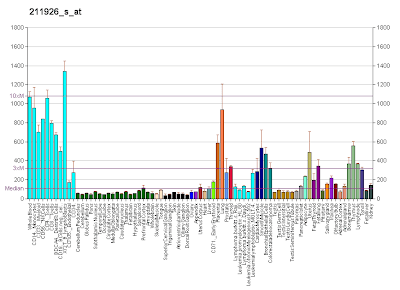 Kevin Heffernan, Ph.D. ostdoctoral Fellow Molecular Cardiology Research Center Tufts Medical Center 800 Washington Street, Box 080 Boston, MA 02111, 617-636-1441 Kevin Heffernan Kevin Heffernan was born and raised in the Bronx NY. He completed his BS in Exercise Science at the University of Scranton, his MS in Applied Physiology and Nutrition at Columbia University, and his PhD in Kinesiology/Exercise Physiology at the University of Illinois at Urbana-Champaign. Kevin has recently joined the Vascular Function Study Group in the Division of Cardiology. His research will focus on novel mechanisms influencing endothelial function and exercise capacity in patients with cardiovascular disease. When Kevin is not in the lab he enjoys resistance training, long walks on the beach and candlelit dinners. | Study points to central blood pressure as key to screening BETHESDA, Md. (Nov. 17, 2008) − Young and healthy African-American men have higher central blood pressure and their blood vessels are stiffer compared to their white counterparts, signs that the African American men are developing hypertension early and with little outward sign, according to a new study. While the study found that central blood pressure -- the pressure in the aorta, near the heart -- was higher in the African-American men, the study found no difference in brachial blood pressure -- measured on the arm -- between the two groups. Taken together, the findings suggest that hypertension (high blood pressure) may be developing undetected in young African-American men and that measuring central blood pressure may be a better means of detecting the problem as it develops. "Central blood pressure holds greater prognostic value than conventional brachial blood pressure as central pressure more aptly reflects the load encountered by the heart," the authors explained. "Thus, brachial blood pressure may neglect important information on cardiovascular burden and response to therapy in African-American men." |
'Silent killer'
African-American men have higher levels of hypertension than white men. Hypertension is known as the silent killer because it can develop without the individual knowing it. According to the U.S. Centers for Disease Control and Prevention, hypertension is a major risk factor for heart disease, stroke, congestive heart failure, and kidney disease. In 2002, hypertension was listed as a primary or contributing cause of death for 277,000 Americans.
The University of Illinois researchers hypothesized that the blood vessels of the black men would show greater dysfunction than the white men, even though both groups were young and equally healthy and fit. The vascular damage they looked for included stiffening and thickening of the blood vessels. These conditions result in pulsatile (not smooth) blood flow (and at higher pressure) to organs. The pressure can damage the organs over time.
Both groups healthy
The study included 55 young men, 30 white and 25 African-American. Most were university seniors. The average age was 23. There were no differences between the groups on a variety of measures, including heart rate, cardiorespiratory fitness, body mass index, body fat, blood lipids and glucose levels.
The researchers measured vascular function in a variety of ways, including:
* aortic blood pressure and stiffness
* brachial blood pressure
* carotid artery blood pressure
* carotid artery thickness and stiffness
They found the African-American men had similar brachial blood pressure, compared to the white men, but they had significantly higher:
* Central blood pressure, a measure of the pressure found in the artery, near the heart. The researchers used an instrument that takes blood pressure at the wrist and then calculates the central blood pressure.
* Carotid artery pressure. The carotid artery runs through the neck.
The African-American men, unlike the white men, also showed signs of early vascular damage that could lead to hypertension. For example, they had:
* Thicker carotid arteries, a sign of vascular damage that is usually found in older individuals and associated with atherosclerosis.
* Stiffer arteries, which are associated with high blood pressure. When the heart beats, blood flows through stiff arteries at greater speed and pressure. Elastic arteries provide a smoother blood flow and help prevent damage to organs receiving the blood and place less stress on the heart.
* Less change in diameter of the arteries when the heart beats, another measure of vascular stiffness. A healthy artery is more elastic will change in size as the blood flows through with each beat of the heart.
"Although having a similar cardiovascular risk factor profile as young white men, diffuse macrovascular and microvascular dysfunction is present at a young age in apparently healthy African American men," the authors wrote. "Values seen are comparable to values often reported in older individuals or individuals with more advanced hypertensive disease," they said.
These results do not shed light on why this happens to young and fit African-American men, Heffernan said. There may be environmental differences, such as differences in diet, which were not examined as part of this study, he said. ###
Editor's Notes: To arrange an interview with Dr. Heffernan, please contact Christine Guilfoy at cguilfoy@the-aps.org or (301) 634-7253.
A fuller audio interview with Dr. Heffernan is available in Episode 15 of the APS podcast, Life Lines, at www.lifelines.tv.
Funding: American Heart Association and the American College of Sports Medicine
Physiology is the study of how molecules, cells, tissues and organs function to create health or disease. The American Physiological Society (APS) has been an integral part of this scientific discovery process since it was established in 1887.
Find the full interview with Dr. Kevin Heffernan in Episode 15 of Life Lines. Interview begins at 13:26. The link is at lifelines.libsyn.com/
Contact: Christine Guilfoy cguilfoy@the-aps.org 301-634-7253 American Physiological Society
































